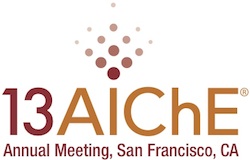

Biopharmaceutical downstream processes are generally dominated by chromatographic separations and membrane filtrations. Single-use systems can increase the efficiency and reduce the costs of these processes , but there are limitations. A common target for single use technology is the preparation , holding and distribution of the numerous buffer solutions required in downstream processing. Buffer preparation may become a capacity-limiting process (bottleneck) in certain high-capacity situations. This paper examines the use of macroscopic modeling techniques to evaluate buffer preparation for downstream processing. A series of cases studies are based on downstream processing for a 2000 L mammalian cell-culture process. Single use buffers offered a number of advantages including a 34% savings in capital costs , a 20% reduction in purified water usage , up to 20% reduction in unit and potential throughput advantages. The cost advantages decline with increased protein load on the process. Furthermore , this study explores facility floor-space limitations that become important when large numbers of disposable containers need to be managed.
